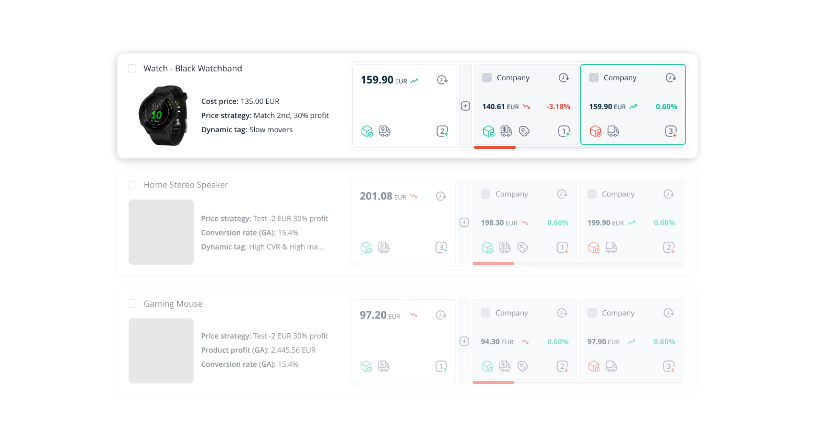The power of the second-cheapest pricing strategy
Learn how being the second cheapest on the market can benefit your business and brand value

The e-commerce market is highly competitive because consumers easily compare prices and find the lowest-priced seller to buy their product from. This also means that pricing becomes a major focus for companies when wanting to stay competitive.
A pricing strategy is essential for effective competition in the e-commerce market. PriceShape is a tool that can assist in developing advanced and effective pricing strategies for different product categories, ensuring the right price is achieved to maximize your profit margins.
Protect your margins while being the second-cheapest
Setting different pricing strategies for each product can be time-consuming and complex, which is why we often see our clients, particularly those in product management, take the “easy” route and choose a pricing strategy based on their entire assortment or product groups. The most commonly used approach here is a pricing strategy set to match the cheapest competitor on the market. This blog post will delve into the benefits of setting a pricing strategy that matches the second-cheapest competitor on the market, a tactic that product managers can leverage to balance competitiveness and profitability.

This strategy takes the same amount of work as matching the cheapest competitor in the market, but in comparison, it has several other benefits.
Example
You’re selling a watch and do not see the need to be the cheapest competitor in the market since this is not what your brand is based on. So instead of price matching the cheapest competitor on the market, who sells the product for €140.6, you could base your price on the second cheapest competitor. This strategy allows you to stay competitive while protecting your margins. The following image shows how you can view the metrics of product performance on our platform.

The strategy is always set to meet the second cheapest competitor, meaning that if the second cheapest competitor lowers its price to €140.6 and also becomes the price leader, your price will dynamically lower your price and match it if your margin requirement allows; this ensures you to stay competitive and follow the market.
→ Read more about a PriceShape feature: Competitor monitoring
Tip
This strategy also works for price, incl. shipping costs,
if you want to consider the total price from your competitors.
A strategy that also helps your brand value
One crucial aspect to consider when adopting the strategy of being the second cheapest on the market is maintaining perceived value. While offering competitive pricing is essential, ensuring that customers perceive your products or services as valuable is equally vital. This involves focusing on factors beyond just price, such as product quality, customer service, brand reputation, and unique selling propositions.
Additionally, being the second cheapest option can position your brand as offering good value for money without sacrificing quality. This can attract a segment of customers who are willing to pay slightly more for added benefits or features. Therefore, it's essential to communicate these value propositions effectively to your target audience through marketing efforts and product messaging.
 Furthermore, regularly reassessing your pricing strategy and market positioning is crucial to adapting to changing market dynamics and competitive landscapes. Monitoring competitor pricing trends, customer preferences, and industry developments can help you fine-tune your approach and maintain a competitive edge in the long term.
Furthermore, regularly reassessing your pricing strategy and market positioning is crucial to adapting to changing market dynamics and competitive landscapes. Monitoring competitor pricing trends, customer preferences, and industry developments can help you fine-tune your approach and maintain a competitive edge in the long term.
A strategy for the long run
This strategy has several aspects because it's not just strategic in the short run to select the second cheapest competitors you want to match; it is also designed to help increase the market price by not matching the cheapest competitor. In the long run, your margin will increase if the price leaders see this and increase their prices. Your strategy will then follow and increase by the same percentage, so you continue to be the second cheapest compared to your selected competitor.
While being the second cheapest on the market can be a strategic move to balance competitiveness and profitability, it's essential to complement this with a focus on delivering value and adapting to market changes effectively.
If you choose to use Priceshape as your preferred pricing tool, you can expect ongoing support and collaboration with our customer success team. Would you like to see a demonstration of our platform?



